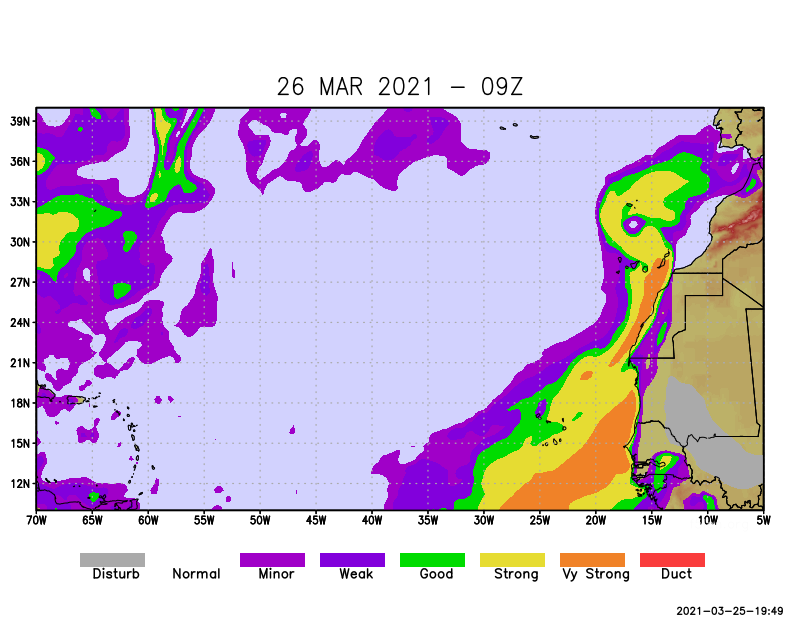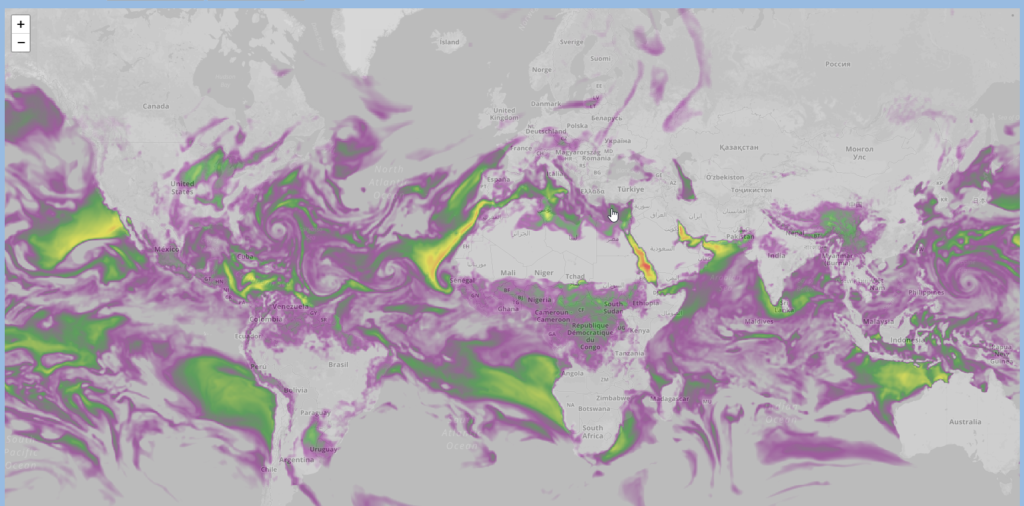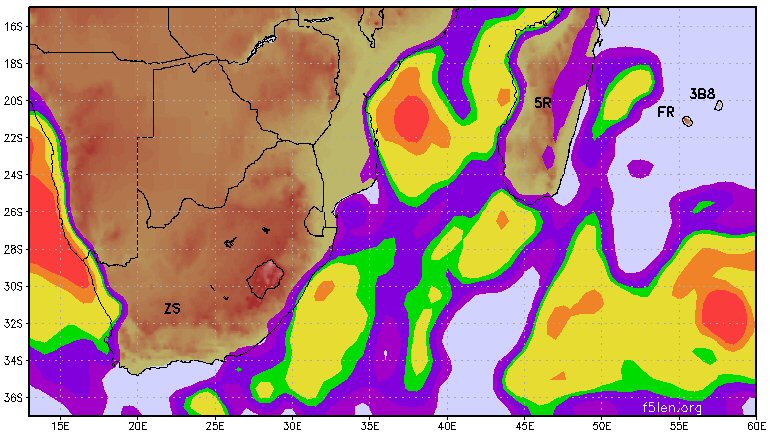Here is a video of the world wide refractive index for 2022.
One frame per day computed at 12 UTC.
Author Archives: f5len
New map added: CT/EA to the caribbean
A new map is available http://tropo.f5len.org/atlantic-ocean/atlantic-eact-kp4/
Requested by amateurs from the caribbean and particulary by FG8OJ.

They are looking to cross the ocean to Europe. They made it on 144 MHz to Cape Verde in 2019.
See the excellent diary of John EI7GL on his blog.
So we whish them a great success in their quest!
Worlwide refractive index forecasts
I am pleased to announce the availability of the worlwide refractive index forecasts.
Maps is fully customizable and show refractive index from 80° S to 80° N worlwide.
A click on the map will show the average index for a specific QRA locator.
Furthermore it can display conditions for the 28 lasts days.
Have a try here: http://tropo.f5len.org/WW/
Super refraction other the Irish sea
(click to enlarge)
John Rowlands (MW1CFN) send this amazing image which shows super refraction of the mountains of Mourne in Northern Ireland, as seen from the Welsh coast – a distance of 142km.
A Fata Morgana can be seen on land or at sea, in polar regions or in deserts. It can involve almost any kind of distant object, including boats, islands and the coastline.
More info on Wikipedia
New scale
Since today a new scale is used.
After few months of tests and evaluation with some users I’m using a new scale wich supposed to reflect propagation below normal (disturbed) in a more accurate way. Thoses situations were probably underestimate.
I’m still looking forward your comment.
73’s Pascal – F5LEN
New map over Atlantic
Requested by FY5KE team and PJ4VHF, I added a new map crossing Atlantic Ocean. This map
slightly different from the previous maps cover from D4/EA8 to caribbean sea.
L’espoir fait vivre!
South Africa to Reunion island and Mauritius
New map
New model implemented
I use now datas from ARPEGE model from Météo France.
Height resolution is better with more surface levels in the range 2m to 1500m.
Horizontal resolution is 7,5 km for Europe and 36 km for Pacific area.
Time forecast up to 102 hours.
Still need some adjustments on my side but good new source of data.
At this time only Europe area is computed. But the other areas will be soon available.
Pascal
Welcome
Welcome on my new website dedicated to the tropospheric propagation forecast.
From Wikipedia about tropospheric radio propagation:
Sudden changes in the atmosphere’s vertical moisture content and temperature profiles can on random occasions make microwave and UHF & VHF signals propagate hundreds of kilometers up to about 2,000 kilometers (1,300 mi)—and for ducting mode even farther—beyond the normal radio-horizon. The inversion layer is mostly observed over high pressure regions, but there are several tropospheric weather conditions which create these randomly occurring propagation modes. Inversion layer’s altitude for non-ducting is typically found between 100 meters (300 ft) to about 1 kilometer (3,000 ft) and for ducting about 500 meters to 3 kilometers (1,600 to 10,000 ft), and the duration of the events are typically from several hours up to several days. Higher frequencies experience the most dramatic increase of signal strengths, while on low-VHF and HF the effect is negligible. Propagation path attenuation may be below free-space loss. Some of the lesser inversion types related to warm ground and cooler air moisture content occur regularly at certain times of the year and time of day. A typical example could be the late summer, early morning tropospheric enhancements that bring in signals from distances up to few hundred kilometers for a couple of hours, until undone by the Sun’s warming effect.
Forecast areas are available from the upper menu.





